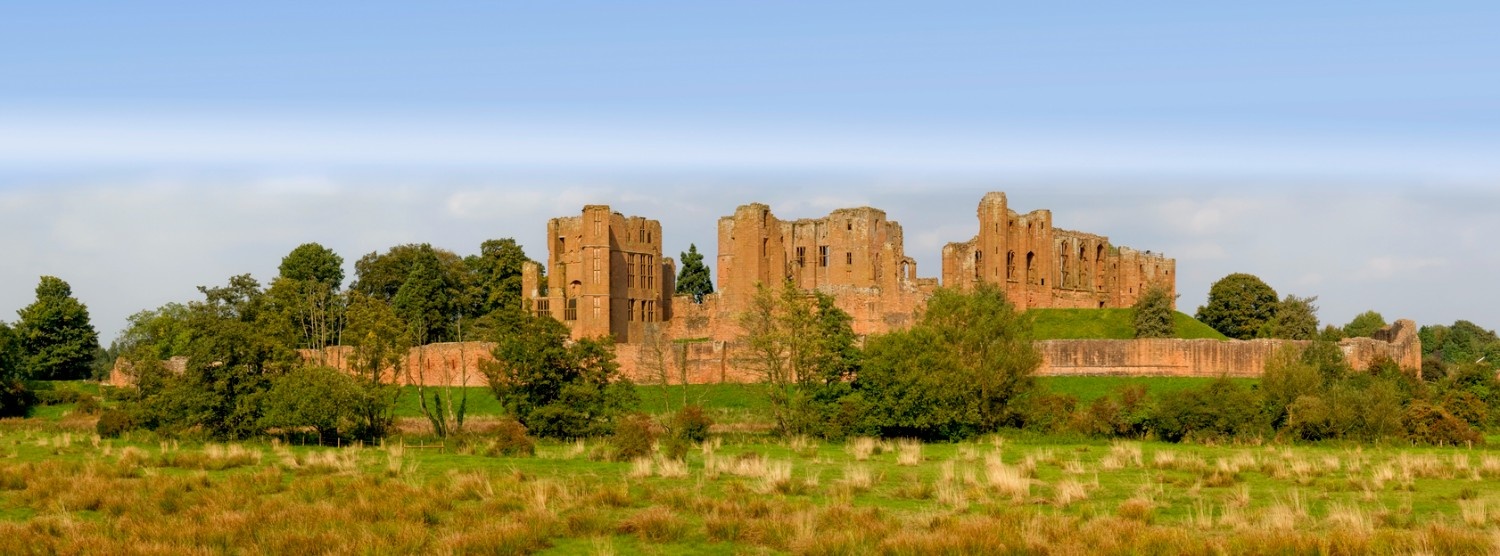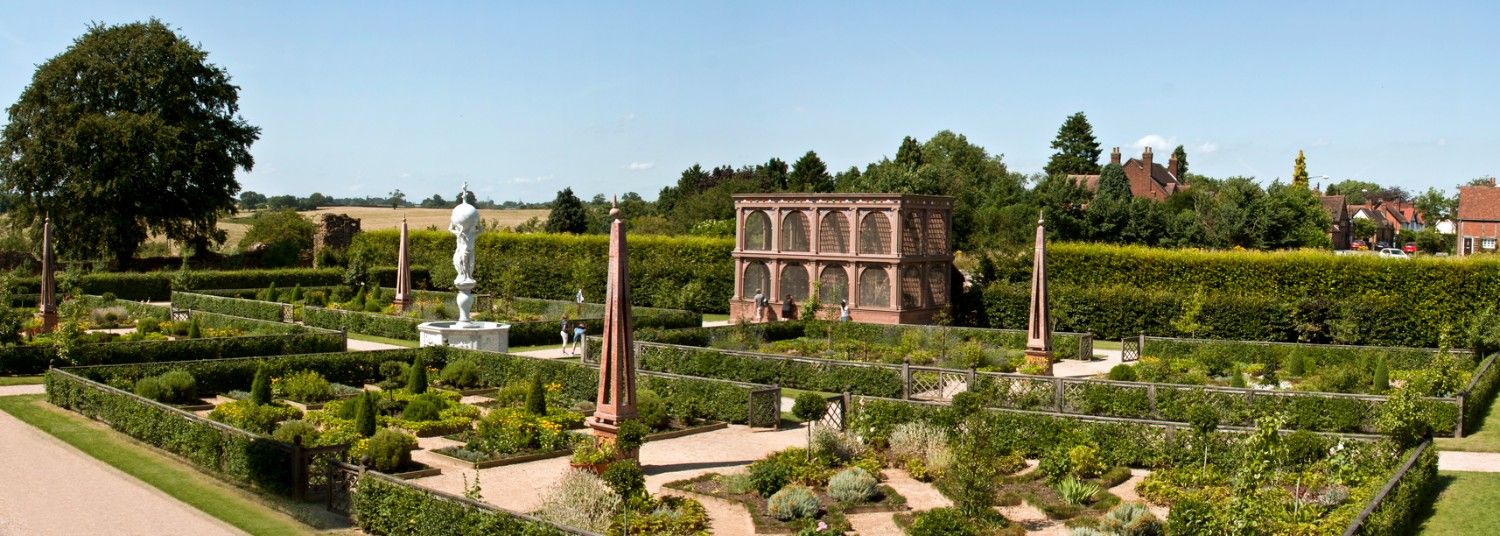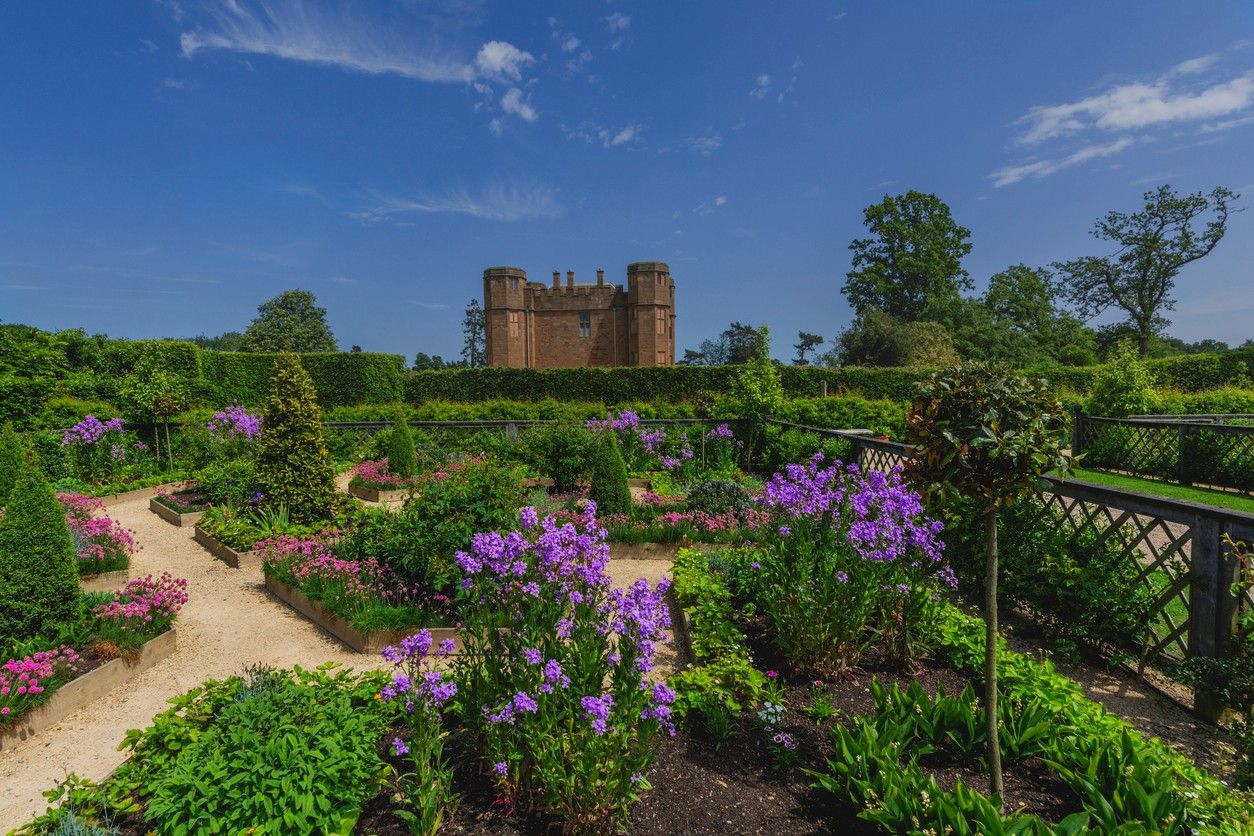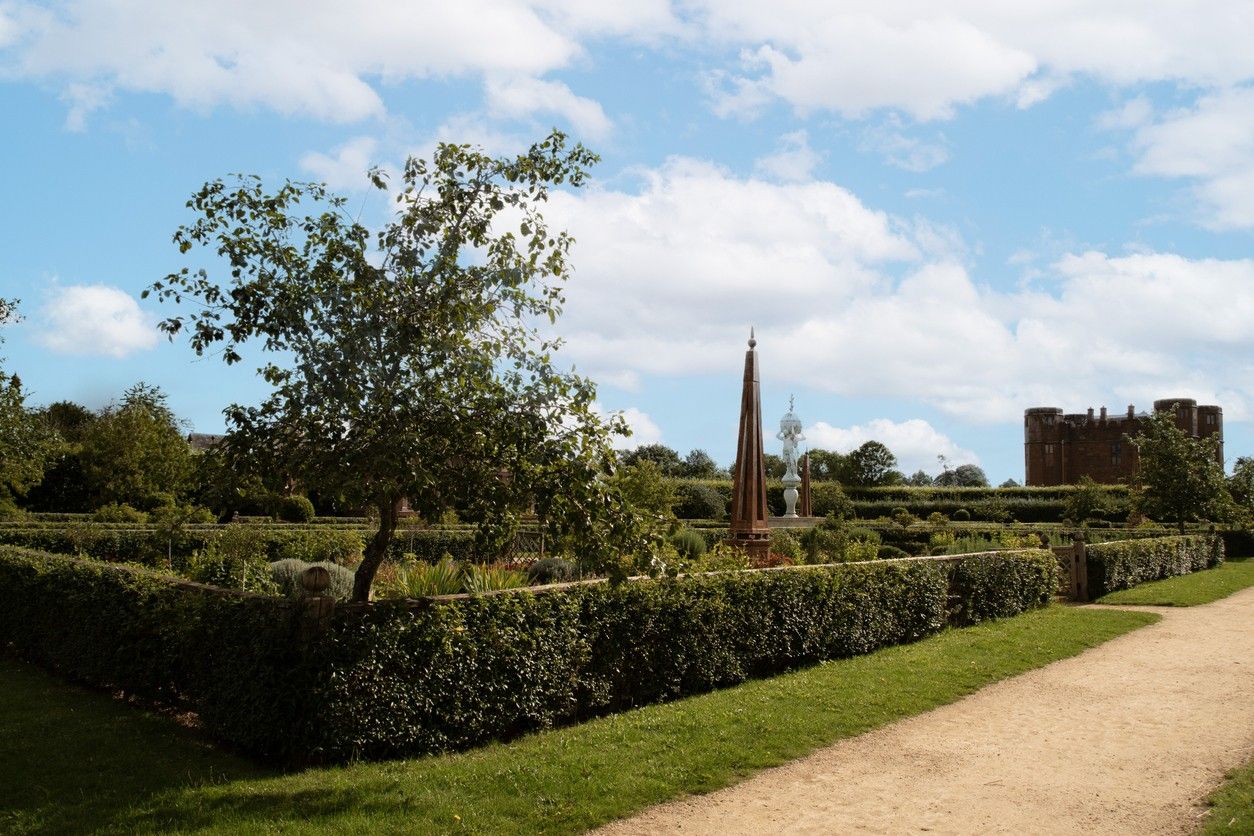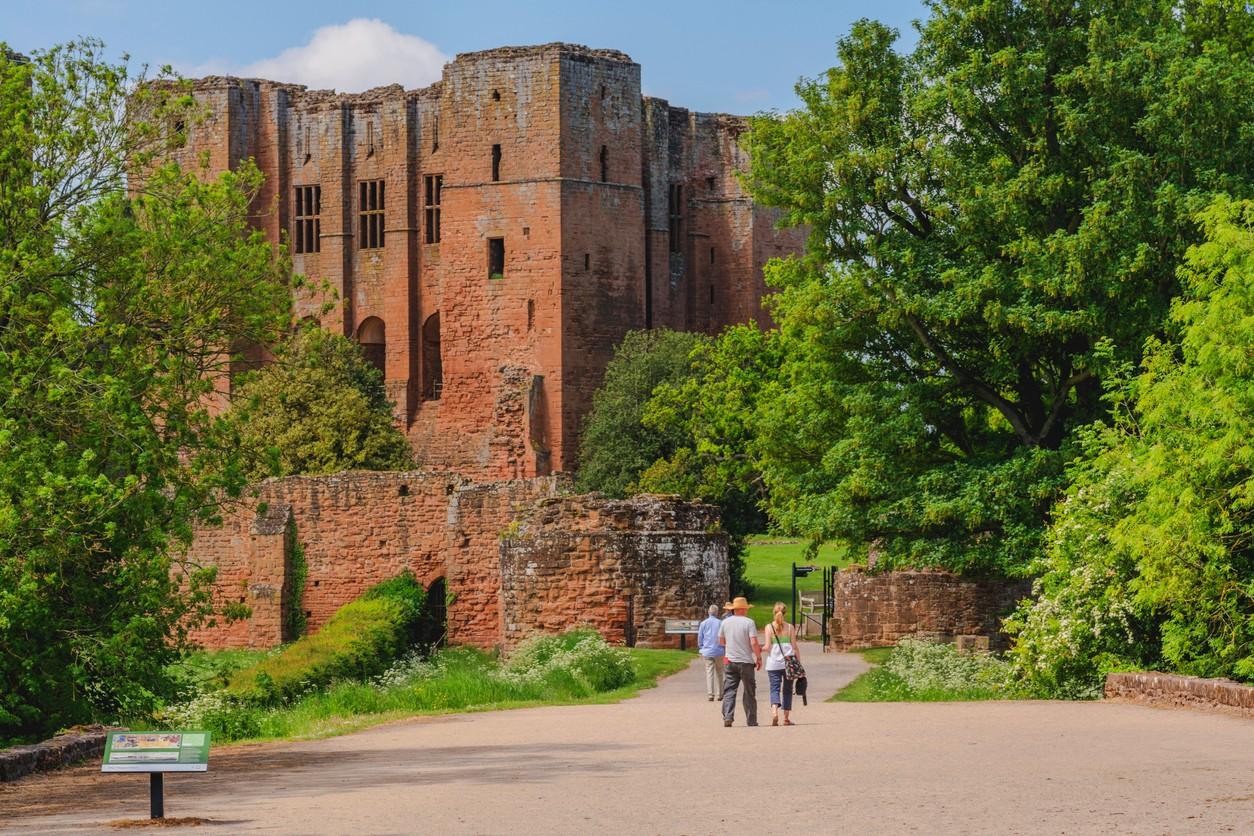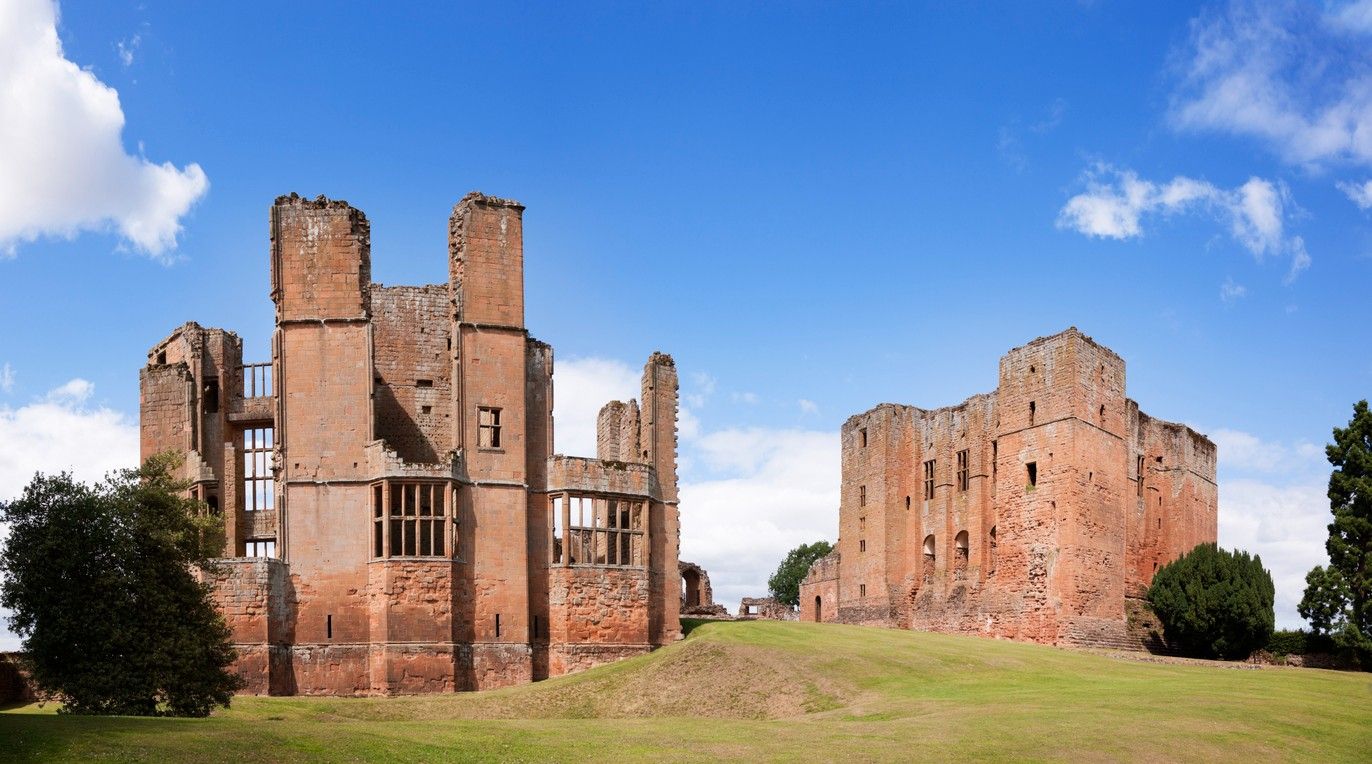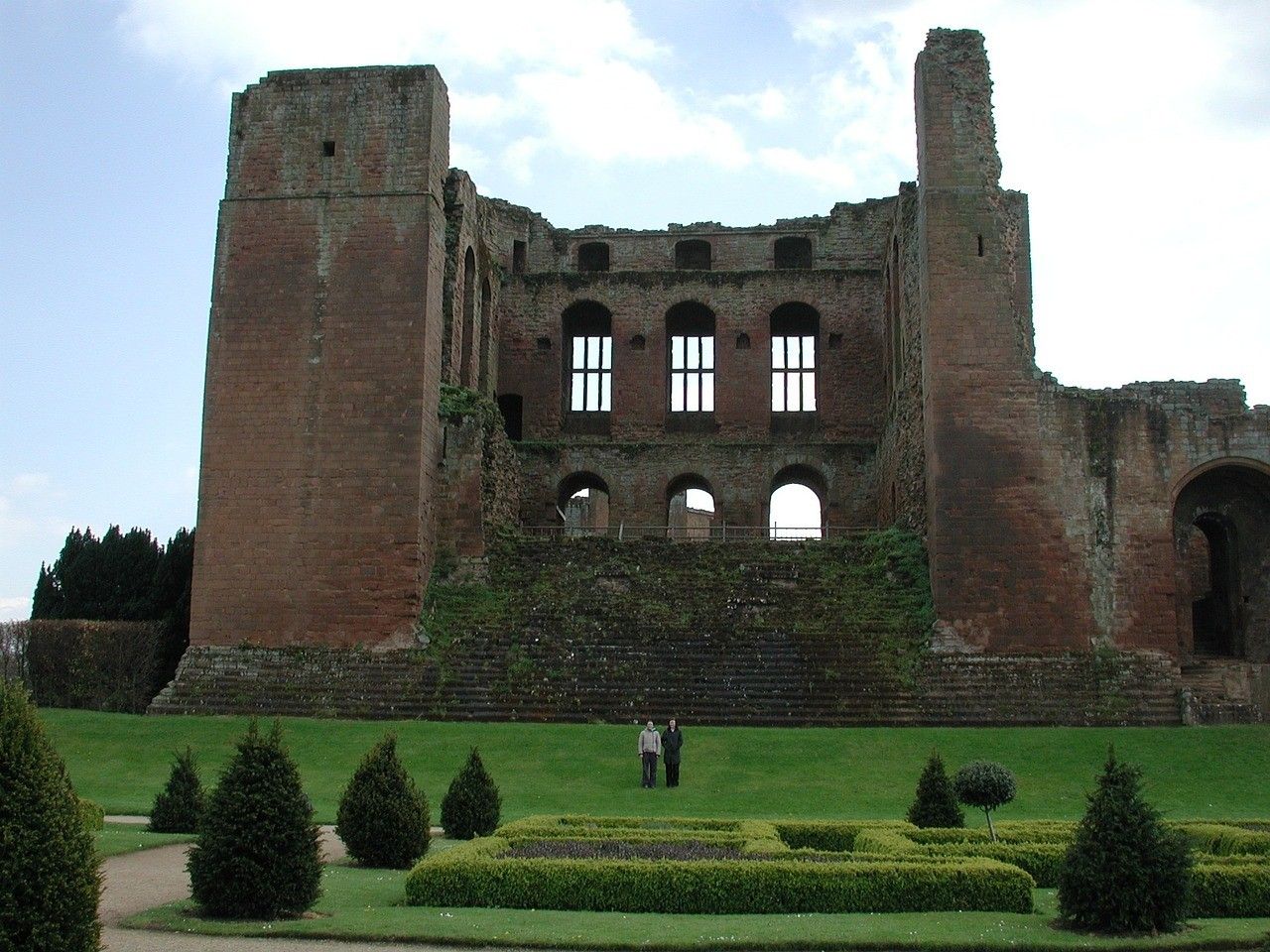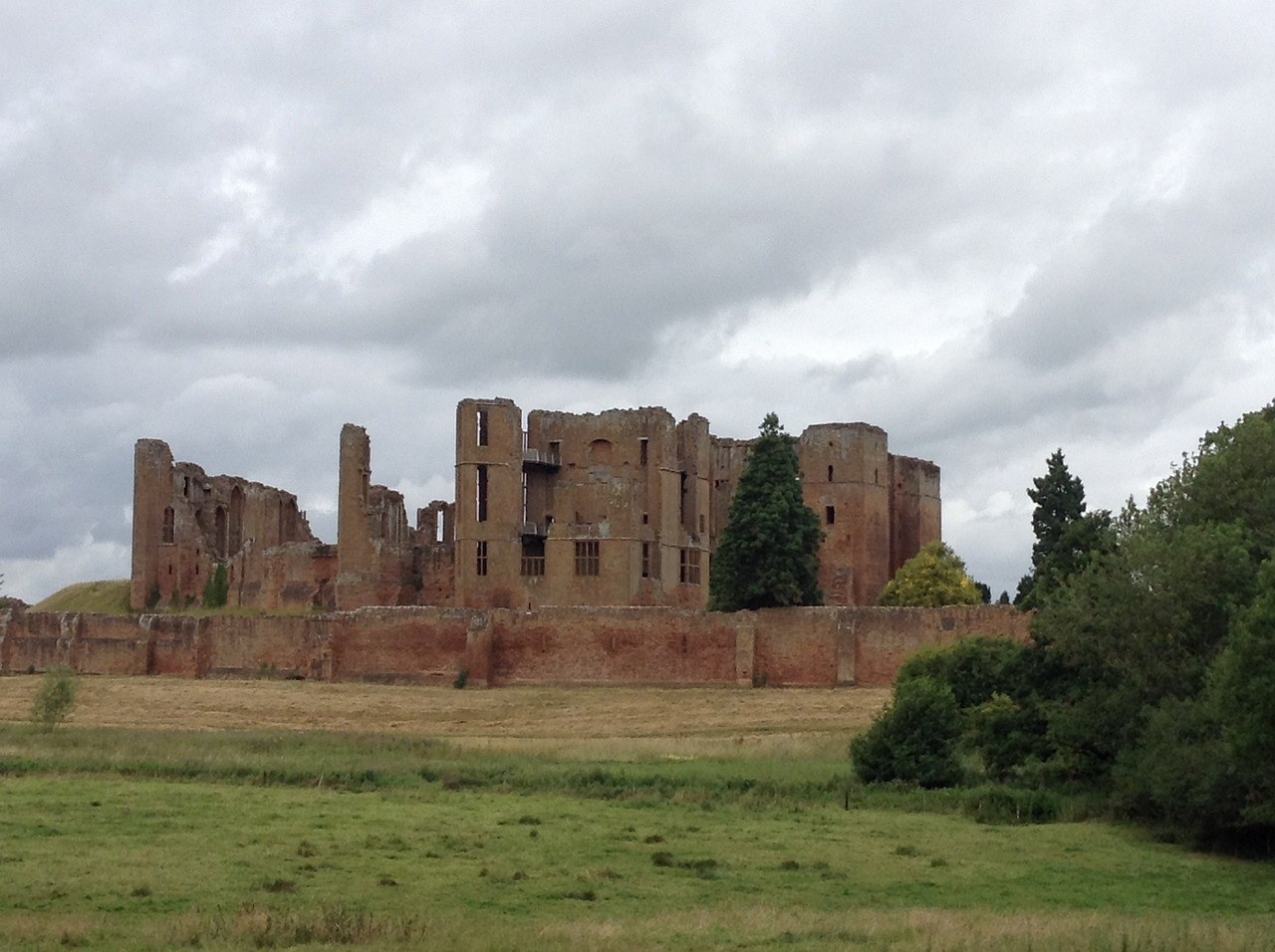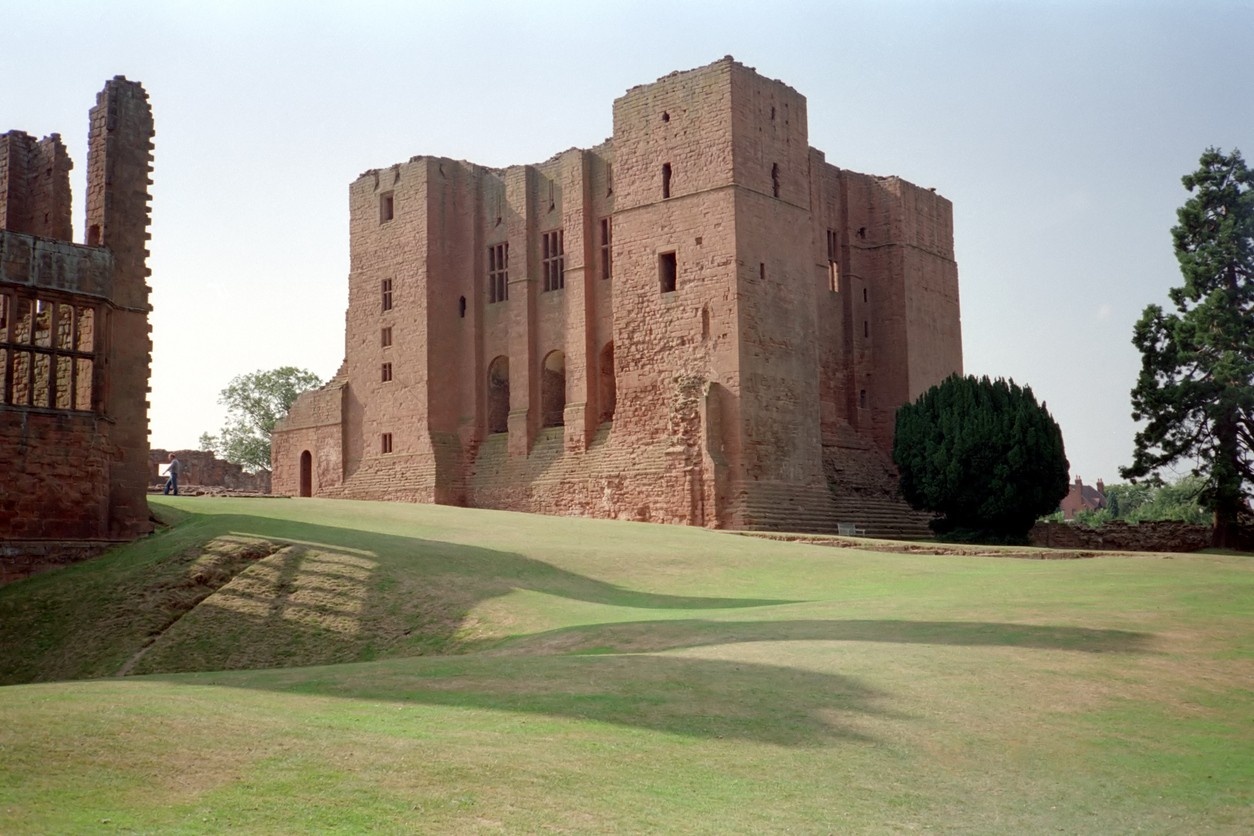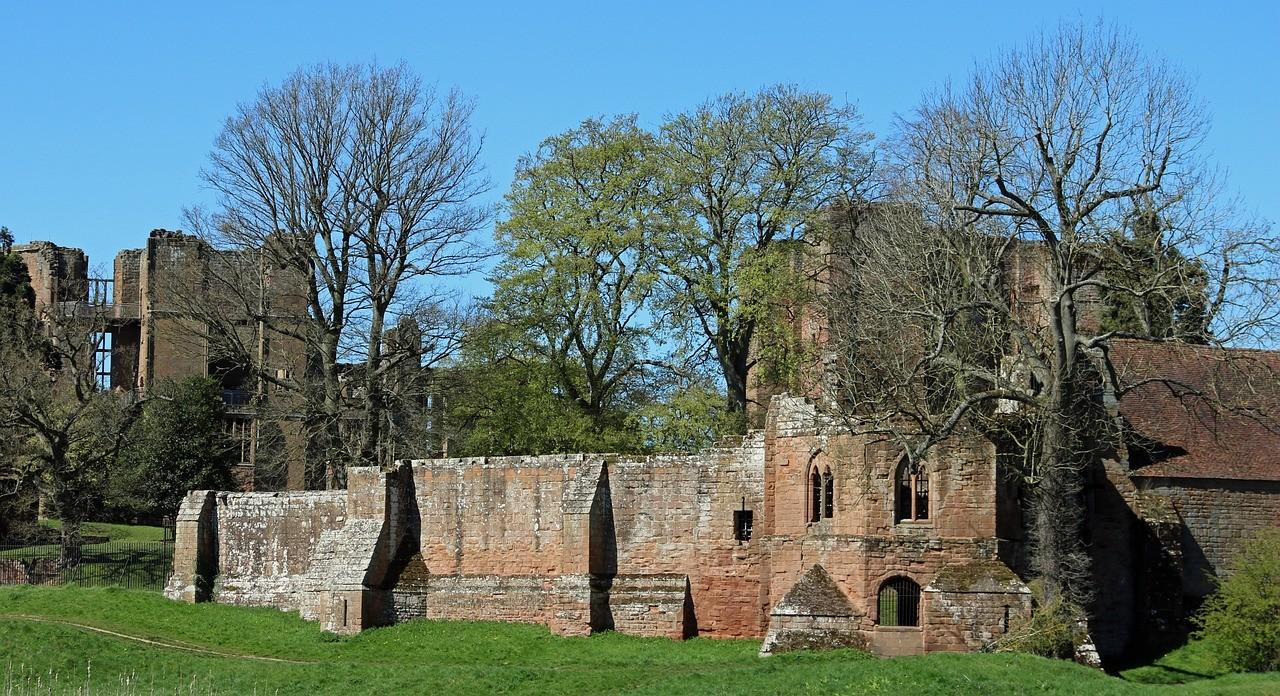The Kenilworth castle's origins can be traced back to the early 12th century when it was founded by Geoffrey de Clinton, the Lord Chamberlain to King Henry I. Over the centuries, the castle underwent numerous expansions and renovations, each leaving an indelible mark on its architecture and character. Notable figures such as King John, Henry III, and John of Gaunt all played a role in shaping the castle's destiny, adding their unique touches to the ever-evolving structure. As you explore the castle grounds, you'll encounter a myriad of architectural marvels that showcase the skill and ingenuity of the medieval craftsmen. The Great Hall, with its soaring ceilings and intricate stone carvings, serves as a testament to the grandeur of royal banquets and celebrations. The Norman Keep, one of the earliest parts of the castle, offers a glimpse into the defensive strategies employed by the castle's inhabitants, with its thick walls and strategic vantage points.
The Splendor of the Elizabethan Garden
Step back in time and immerse yourself in the breathtaking beauty of the Elizabethan Garden. This meticulously recreated masterpiece offers visitors a unique glimpse into the opulence and grandeur of the Tudor era. From the intricate knot gardens to the stunning water features, every element of this horticultural wonder has been designed to delight and inspire. Join us as we explore the rich history and exquisite details of this magnificent garden, and discover why it remains one of the most enchanting attractions at Kenilworth Castle.
A Horticultural Masterpiece
Prepare to be enchanted by the breathtaking beauty of the Elizabethan garden at Kenilworth Castle, a true horticultural masterpiece. The garden is a testament to the opulence and refinement of the Tudor era, showcasing the incredible skill and creativity of the gardeners who brought this vision to life. Everywhere you look, you'll discover something new and exciting in this stunning garden. From the carefully manicured lawns to the precisely trimmed topiary, every element has been designed to delight and inspire. The garden is divided into distinct sections, each with its unique character and charm. The knot garden, with its intricate patterns of low-growing herbs and shrubs, is a particular highlight, showcasing the Tudor fascination with geometry and symmetry. The colourful flower beds are a feast for the senses, bursting with an array of blooms that change with the seasons, from delicate spring bulbs to lush summer perennials. As you explore the garden further, you'll encounter stunning water features, including bubbling fountains and serene reflecting pools, which add an extra dimension of beauty and tranquillity to the space. The sound of trickling water and the sight of shimmering reflections create a mesmerising effect, inviting you to pause and marvel at the incredible craftsmanship and attention to detail that went into creating this horticultural masterpiece.
The Garden's Royal Origins
The Elizabethan garden at Kenilworth Castle is not just a beautiful space; it's also a fascinating piece of history with royal origins. The garden was created in the 16th century by Robert Dudley, the Earl of Leicester, as a lavish gift to Queen Elizabeth I. Dudley was one of the queen's closest confidants and a man of great wealth and influence, and he spared no expense in creating a garden that would impress and delight his royal guest. The garden was designed to be a true spectacle, with no detail overlooked. Dudley commissioned the finest gardeners and craftsmen of the time to create a space that would showcase the very best of Tudor horticulture and design. The result was a garden that was both beautiful and symbolic, with every element carefully chosen to reflect the power, prestige, and sophistication of the Tudor court.
At the heart of the garden was the desire to create a space that would be fit for a queen. Dudley knew that Elizabeth was a woman of great taste and refinement, and he wanted to create a garden that would exceed her every expectation. The garden was filled with an array of rare and exotic plants, many of which had never been seen before in England. Brightly coloured flowers, fragrant herbs, and lush greenery were all carefully chosen to create a feast for the senses, while the intricate knot gardens and precisely trimmed topiary showcased the incredible skill and artistry of the gardeners. But the garden was more than just a pretty space; it was also a reflection of the deep affection and respect that Dudley had for the queen. Every element of the garden was designed to symbolise his devotion to Elizabeth, from the intricately carved statues and fountains to the carefully chosen plants and flowers. The garden was a true labour of love, and it's easy to imagine the queen being deeply touched by the incredible effort and attention to detail that went into creating this incredible space.
Restored to Former Glory
One of the most remarkable things about the Elizabethan garden is the incredible work that has gone into restoring it to its former glory. When the garden was first rediscovered in the early 20th century, it had fallen into a state of disrepair, with overgrown plants, crumbling structures, and little trace of its former beauty. But thanks to the dedication and expertise of a team of gardeners, historians, and conservationists, the garden has been painstakingly brought back to life, allowing visitors to experience it just as Queen Elizabeth I would have done over 400 years ago The restoration process was a true labour of love, involving years of research, planning, and hard work. The team began by studying historical documents and records to gain a deeper understanding of what the garden would have looked like in its heyday. They also conducted archaeological excavations to uncover the original layout and features of the garden, including the foundations of long-lost structures and the remnants of ancient planting beds. Using this information, the team set about recreating the garden as accurately as possible, using traditional techniques and materials wherever possible. They sourced rare and historic plant varieties, many of which had to be grown from seed or propagated from surviving specimens. They also recreated the intricate knot gardens and topiary, using the same tools and techniques that the Tudor gardeners would have used centuries ago.
The result of all this hard work is a garden that is as close to its original form as possible, allowing visitors to step back in time and experience the incredible beauty and artistry of the Tudor era. As you walk through the garden today, you'll see the same vibrant colours, intricate designs, and lush greenery that would have greeted Queen Elizabeth I all those years ago. You'll also gain a deeper appreciation for the incredible skill and dedication of the gardeners who have brought this space back to life, ensuring that it will continue to delight and inspire visitors for generations to come. However, the restoration of the Elizabethan garden is an ongoing process, with gardeners and conservationists working tirelessly to maintain and improve the space. Every season brings new challenges and opportunities, from the changing weather to the ever-evolving needs of the plants and wildlife that call the garden home. But with their passion and expertise, the team at Kenilworth Castle is more than up to the task, ensuring that this incredible space will continue to thrive and delight visitors for many years to come.
The Queen’s Visits and Relation with The Castle
Queen Elizabeth I's connection with Kenilworth Castle is a fascinating chapter in British history, marked by the intricate relationship between the queen and Robert Dudley, the Earl of Leicester. The castle not only served as a stage for one of the most storied courtships in British history but also as a symbol of the political and personal dynamics of the Elizabethan era. The bond between Elizabeth and Kenilworth began when she granted the castle to Dudley in 1563, not as a gift but as part of the royal estates that Dudley was allowed to manage as a favored courtier. Dudley was indeed one of Elizabeth's closest confidants, and while he was rumored to be her lover, the true nature of their relationship is still a topic of speculation and historical inquiry. Dudley invested heavily in the castle, transforming it into a palace designed to impress and entertain the queen and her court. This included the addition of opulent furnishings, grand banquet halls, and the magnificent Elizabethan garden, all crafted to reflect the grandeur of the Tudor court.E
lizabeth's visits to Kenilworth were grand affairs, with the most notable occurring in 1575. This visit lasted 19 days and featured a series of elaborate festivities, including fireworks, masques, and a mock naval battle on the castle's lake, designed to showcase Dudley's devotion and entertain the royal entourage. These events were attended by many dignitaries and were a significant demonstration of Dudley's hospitality and his hopes of advancing his relationship with the queen.However, the relationship between Elizabeth and Dudley was fraught with complications. Dudley's wife, Amy Robsart, died in 1560 under mysterious circumstances, leading to rumors that Dudley had orchestrated her death to clear the way for marrying Elizabeth. Despite the scandal, Elizabeth never married Dudley or anyone else, maintaining her image as the "Virgin Queen," which was crucial for her political and personal sovereignty.Dudley's death in 1588 marked the end of an era, but the legacy of his and Elizabeth's relationship continues to be a point of intrigue and speculation. Today, Kenilworth Castle stands as a testament to their complex relationship, with its grand halls and restored gardens offering visitors a glimpse into the Elizabethan era's opulence and the personal stories that shaped it. The castle's preservation allows for a deep dive into the historical context of one of England's most famous royal courtships.
Dining Options near and at the Castle
After a day of exploring the wonders of Kenilworth Castle, treat yourself to a delicious meal at the Queen and Castle. This charming pub, located just a short walk from the castle grounds, offers a mouth-watering selection of traditional British dishes that are sure to satisfy even the heartiest of appetites. From succulent roasts to classic desserts, the Queen and Castle Kenilworth menu showcases the best of British cuisine, all made with the freshest locally sourced ingredients.
Discover a Range of Dining Options
When it comes to dining at Kenilworth Castle, visitors are spoilt for choice. Whether you're in the mood for a hearty meal, a light snack, or a sweet treat, there's something to suit every taste and appetite. The castle offers a range of dining options, from cosy cafes to elegant tearooms, each with its unique charm and character.
Stables Tearoom — Located in the castle's historic stables building, this charming tearoom offers a delicious selection of homemade cakes, scones, and sandwiches, as well as a range of freshly brewed teas and coffees.
Queen & Castle Restaurant — Located in the heart of Kenilworth town, just a 10-minute walk from the castle, this popular restaurant serves up a mouth-watering menu of British classics and modern dishes, using the finest locally sourced ingredients.
Clarendon Arms — This historic pub, situated just a 5-minute drive from the castle, offers a cosy atmosphere, friendly service, and a great selection of real ales, ciders, and classic pub grub.
Traditional Dishes at the Queen and Castle in Kenilworth
If you're looking for a true taste of traditional British cuisine, look no further than the Queen and Castle in Kenilworth. This charming pub, located just a short walk from the castle grounds, offers a delicious selection of classic British dishes that are sure to satisfy even the heartiest of appetites. The Queen and Castle Kenilworth menu is a celebration of all that is great about British cooking, with a focus on fresh, locally sourced ingredients and time-honoured recipes. From savoury pies and succulent roasts to fresh seafood and seasonal vegetables, there's something to suit every taste and preference.
One of the pub's signature dishes is the steak and ale pie, a hearty and satisfying meal that's perfect for a cold winter's day. The pie is made with tender chunks of steak, slow-cooked in a rich and flavorful ale gravy, and topped with a crisp and buttery pastry crust. It's served with creamy mashed potatoes and a selection of seasonal vegetables, making it a complete and satisfying meal in itself. Another popular choice on the Queen and Castle Kenilworth menu is the fish and chips. This classic British dish features fresh, locally caught fish, coated in a light and crispy batter and served with golden, crispy chips and a side of mushy peas. It's a simple but delicious meal that's sure to satisfy your cravings for something salty and savoury.
The pub also offers a range of salads and vegetarian options, all made with fresh, locally sourced ingredients. The goat's cheese and beetroot salad, for example, features creamy and tangy goat's cheese, sweet and earthy beetroot, and a mix of crisp salad leaves, all drizzled with a honey and mustard dressing. It's a delicious and healthy option that's perfect for a light lunch or a refreshing side dish. Of course, no British pub meal would be complete without a pint of beer or a glass of wine to wash it down. The Queen and Castle in Kenilworth offers a great selection of local and international beers, as well as a carefully curated wine list featuring some of the best vintages from around the world.
Afternoon Tea at the Castle Tearoom
For a truly indulgent and quintessentially British experience, look no further than afternoon tea at the Castle Tearoom at Kenilworth Castle. This charming tearoom, located in the castle's historic stables building, offers a delightful selection of sweet and savoury treats, all served in a beautiful and tranquil setting. The afternoon tea menu at the Castle Tearoom features a range of delicious options, all made with the finest ingredients and presented with care and attention to detail. The traditional afternoon tea includes a selection of dainty sandwiches, freshly baked scones with clotted cream and jam, and a variety of sweet treats such as cakes, pastries, and biscuits. All of this is accompanied by a pot of freshly brewed tea, with a range of options to choose from including classic English Breakfast, fragrant Earl Grey, and soothing chamomile. For those looking for something a little more indulgent, the Castle Tearoom also offers a champagne afternoon tea, which includes all of the traditional elements as well as a glass of chilled champagne. This is the perfect way to celebrate a special occasion or simply treat yourself to a little bit of luxury.
One of the great things about afternoon tea at the Castle Tearoom is the attention to detail and the quality of the ingredients used. The sandwiches are made with fresh, locally sourced bread and fillings, while the scones are baked fresh each day and served warm with generous helpings of clotted cream and jam. The cakes and pastries are all made in-house by skilled pastry chefs, using the finest ingredients and traditional recipes. But it's not just the food that makes afternoon tea at the Castle Tearoom so special. The setting itself is simply stunning, with beautiful views over the castle grounds and a peaceful, relaxed atmosphere. The tearoom is decorated in a classic, elegant style, with comfortable seating and plenty of natural light. It's the perfect place to sit back, relax, and enjoy a little bit of indulgence. Afternoon tea at the Castle Tearoom is a popular choice for visitors to Kenilworth Castle, and it's easy to see why. It's a chance to step back in time and experience a little bit of British tradition in a beautiful and historic setting. Whether you're celebrating a special occasion or simply looking for a relaxing and indulgent treat, afternoon tea at the Castle Tearoom is not to be missed.
Planning Your Visit to Kenilworth Castle
Ticketing Options — If you're planning a visit to Kenilworth Castle, there are a few key things to keep in mind to ensure a smooth and enjoyable experience. One of the first things to consider is Kenilworth Castle tickets. The castle offers a range of ticketing options to suit different needs and budgets, from individual admission to family passes and group rates. It's always a good idea to check the castle's official website or contact the ticket office directly to get the most up-to-date information on prices and availability.
Accessing the Kenilworth Castle Elizabethan Garden — When purchasing your Kenilworth Castle tickets, it's also worth considering whether you want to include access to the Kenilworth Castle Elizabethan Garden in your visit. While the garden is included in the general admission price, there may be special events or guided tours that require a separate ticket. Be sure to read the ticket descriptions carefully and choose the option that best fits your interests and schedule.
Getting to the Castle — Once you have your Kenilworth Castle tickets sorted, it's time to start planning the logistics of your visit. The castle is located in the town of Kenilworth, Warwickshire, and is easily accessible by both car and public transportation. If you're driving, there is a dedicated car park on-site, although it can get quite busy during peak season. Alternatively, you can take a train to Kenilworth station and then either walk or take a short taxi ride to the castle grounds.
Best Time to Visit — When it comes to the best time to visit Kenilworth Castle, there are a few factors to consider. The castle is open year-round, but the opening hours and available facilities may vary depending on the season. During the summer months, the castle tends to be busier, especially on weekends and school holidays. If you prefer a quieter experience, consider visiting during the shoulder season or on a weekday.
What to Wear and Accessibility — It's also worth noting that Kenilworth Castle is a large site with plenty of outdoor spaces to explore. As such, it's a good idea to wear comfortable shoes and dress appropriately for the weather. The castle grounds can be uneven in places, so if you have mobility issues, it's worth checking with the castle staff to see what accessibility options are available.
Guided Tours and Educational Opportunities — For those who want to delve deeper into the history and significance of the Kenilworth Castle and Elizabethan Garden, guided tours and interactive exhibits are available. Knowledgeable guides can provide insight into the symbolism and meaning behind the garden's design, as well as the role it played in the courtship between the queen and Castle Kenilworth. Visitors can also learn about the various plants and herbs that were popular during the Tudor era, and how they were used for medicinal, culinary, and decorative purposes.
Nearby Attractions and Amenities — Finally, if you're planning a longer stay in the area, there are plenty of other attractions and amenities to explore in and around Kenilworth. The town itself has a charming high street with a variety of shops, cafes, and restaurants, as well as a weekly market that showcases local produce and crafts. For those interested in history and culture, the nearby Castle Medical Centre Kenilworth offers a fascinating glimpse into the town's medical heritage, while the Queen and Castle in Kenilworth is a popular pub that serves up traditional British fare and a warm, welcoming atmosphere.
Related Articles

Let us know you agree to cookies
We use marketing, analytical and functional cookies as well as similar technologies to give you the best experience. Third parties, including social media platforms, often place tracking cookies on our site to show you personalised adverts outside of our website.
We store your cookie preferences for two years and you can edit your preferences via ‘manage cookies’ or through the cookie policy at the bottom of every page. For more information, please see our cookie policy.
